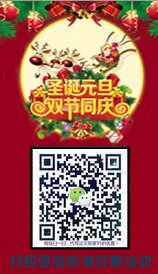On Translation of Tourist Material [9]
论文作者:马锦英论文属性:短文 essay登出时间:2009-04-02编辑:黄丽樱点击率:36276
论文字数:7325论文编号:org200904022048411653语种:英语 English地区:中国价格:免费论文
关键词:tourist materialslanguageculturetranslationDifferent
e applied. That is to say, using more commonly used words to render the original, yet the meaning is retained.
Rich in four-character collocations and parallel structures, Chinese texts of tourism culture are merited with vivid descriptions of the scenery of the place in question. It is not easy to translate these texts abundant in such challenging rhetorical devices. Sometimes, even if a verbatim version has been wrestled out, it usually turns out to be inefficient, let alone being verbose. In this case, the best way to avoid such invalid translation in tourism culture is to paraphrase the source text by simplifying the verbiage and retrieving the essential information to fulfill the function of the text. Here are two successful examples, in which the flowery diction of the Chinese version is distilled into succinct English.
Example1:
大明湖百花映日,万树峥嵘,水鸟翔集,锦鳞戏泳,怪石嶙峋,流水潺潺,自然景色美不胜收。
在大明湖800种花卉草木中,数量最多,久负盛名的是荷花和柳树。公园的湖内池中广植荷花,盛夏时节红白竞放,花光照眼,叶翻绿浪,香气侵衣。湖畔岛上有垂柳千余株,浓荫覆岸,柔条拂水,临风起舞,婀娜多姿。
“In Daming Lake Park visitors could enjoy the bright colors of flowers, heavy shades of trees, and watch birds fly and fish swim. There are also clear streams murmuring between the rockeries.
Lotus flowers and the willow trees form the major part of the park’s 800 kinds of plants. In summer, white and red flowers glimmer among the sea of leaves, giving off delicate scents. Along the banks and on the islands more than one thousand willow trees dance in the breeze.”
Example 2:
济南悠久灿烂的历史文化,赋予大明湖丰富的人文景观。历代建筑,碑刻如一颗颗明珠镶嵌湖上岸边,虽有人坐,宛如天成,为大明湖增辉添彩。
大明湖现有一坊,一阁,三园,四祠,六岛,七桥,十亭。这些建筑布局合理,错落有致,命名俱雅而风格各异,既向人们展示了巧夺天公的园林艺术,又向人们默默地讲述其中蕴涵的历史故事。
“Architecture forms an important part of the lake’s scenery. The buildings of different times in various styles are well planned and laid out, performing different functions. The gateway, the terrace, the pavilions, the temples, the bridges, the yards and the islands represent the art of garden architecture, and at the same time tell the stories of ancient figures.”
By eliminating the ornate elements, the English texts, terse and succinct, never fail to make the target readers experience the beautiful scene depicted in the source texts. Paraphrasing can also function properly in translating the tourism text with allusions and quotations that are not very essential for the whole text.
Example 3:
中国古代神话传说,天地万物之祖盘古死后,头部化为东岳泰山。据梁人任方撰的《述异记》:“昔,盘古之死也,头为四岳,目为日月,脂膏为江海,毛发为草木”。秦汉间传说:盘古头为东岳,腹为中岳,左臂为南岳,右臂为北岳,足为西岳。从而,泰山成为五岳之首。
“According to the Chinese ancient mythology, when Pangu, the ancestor of all things, died, his head turned into Mount Tai; his belly into the Central Mountain; his left arm turned into the South Mountain and his right hand, the West Mountain. Mount Tai thus has become the head of all the mountains.”
In this example, the quotations are employed to explain the reason why Mount. Tai is the head of all mountains, and thus the translator paraphrases the source text so as to achieve the fluent and comprehensible effect.
5.6 Rewriting
The
strategy of rewriting refers to rearranging the contents or the structure of the source text. It is desirable in cases where the source texts are badly written or unsuitable for translation. Though the Chinese versions of most tourism publications, intended for domestic tourists, are not badly written, sometimes, they don’t conform to the expectations of foreign tourists. In this case, rewriting works more effectively than literal translation as displayed in the following example.
Example1:
本论文由英语论文网提供整理,提供论文代写,英语论文代写,代写论文,代写英语论文,代写留学生论文,代写英文论文,留学生论文代写相关核心关键词搜索。

 英国
英国 澳大利亚
澳大利亚 美国
美国 加拿大
加拿大 新西兰
新西兰 新加坡
新加坡 香港
香港 日本
日本 韩国
韩国 法国
法国 德国
德国 爱尔兰
爱尔兰 瑞士
瑞士 荷兰
荷兰 俄罗斯
俄罗斯 西班牙
西班牙 马来西亚
马来西亚 南非
南非






